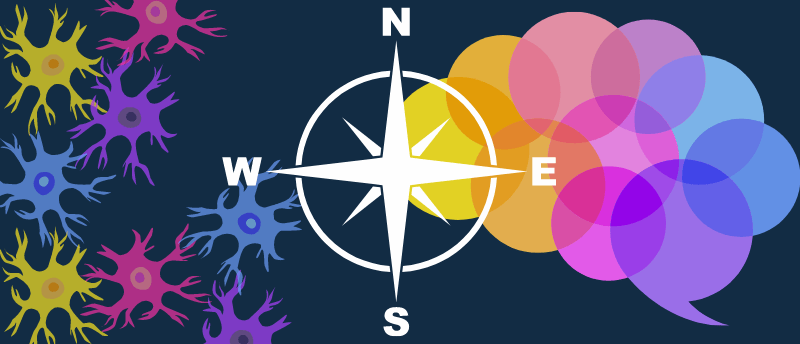True North: locating the neurons responsible for navigation

A recent study uncovers the neurons encoding orientation and navigational information in the human brain.
Researchers at the University of Birmingham (UK) and Ludwig Maximilian University of Munich (Germany) have pinpointed the location of our internal neural compass. By locating the brain activity encoding directional information, researchers hope to learn more about neurodegenerative diseases that affect the navigational neurons, such as Alzheimer’s and Parkinson’s disease.
First author Benjamin Griffiths commented: “Keeping track of the direction you are heading in is pretty important. Even small errors in estimating where you are and which direction you are heading in can be disastrous. We know that animals such as birds, rats and bats have neural circuitry that keeps them on track, but we know surprisingly little about how the human brain manages this out and about in the real world.”
However, it is tricky to measure neural activity when on the move, which is exactly what the team was trying to do. To overcome this challenge, the researchers collected neural activity from 52 healthy participants using mobile EEG devices and motion capture while they completed a series of motion-tracking experiments. This activity was then collected and analyzed to determine how activity correlated with head direction and experimental cues.

The brain’s nightly housekeeping routine
Researchers have found that while we sleep, we lose synaptic connections that have been forged while awake.
In a parallel study, 10 individuals – who were already undergoing intercranial electrode monitoring for conditions such as epilepsy – were monitored participating in the same experiments. In both studies, the experiments conducted prompted participants to move their heads or just their eyes while their brain activity was being monitored.
They used EEG caps, which record scalp signals, and intracranial EEG, which records from the hippocampus and neighboring regions. The signals recorded showed a finely tuned directional signal that can be detected just before physically changing the head direction, revealing the neural activity and location of head direction, an essential part of orienting ourselves in space.
“Isolating these signals enables us to really focus on how the brain processes navigational information and how these signals work alongside other cues such as visual landmarks. Our approach has opened up new avenues for exploring these features, with implications for research into neurodegenerative diseases and even for improving navigational technologies in robotics and AI,” concluded Griffiths.
From directional navigation to temporal navigation, the team next plans to investigate how we navigate through time, hopefully highlighting the neural activity responsible for memory.